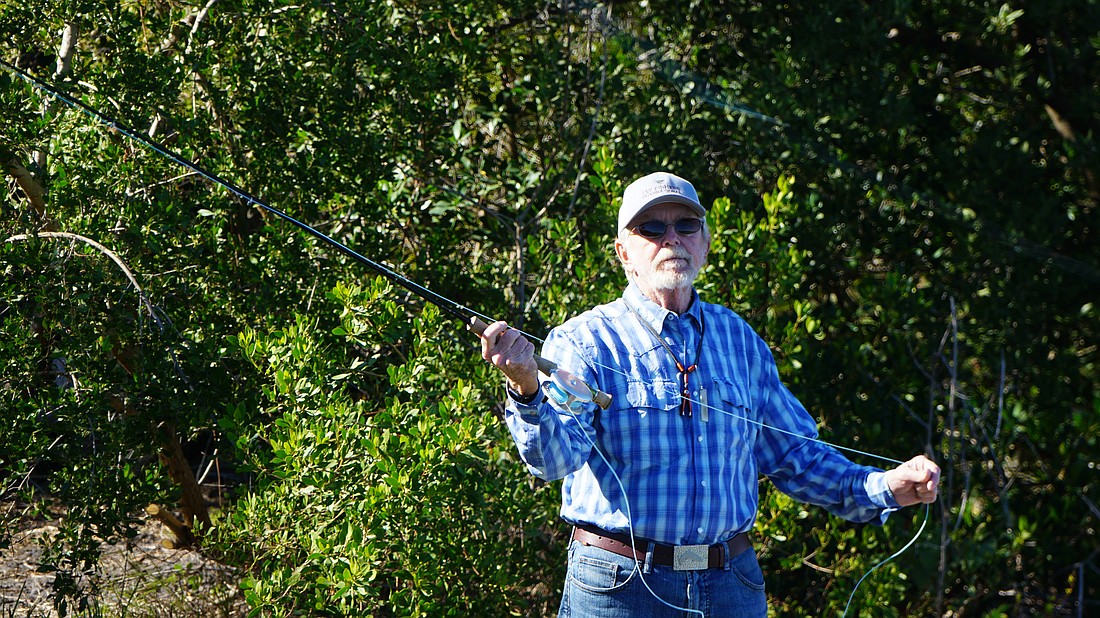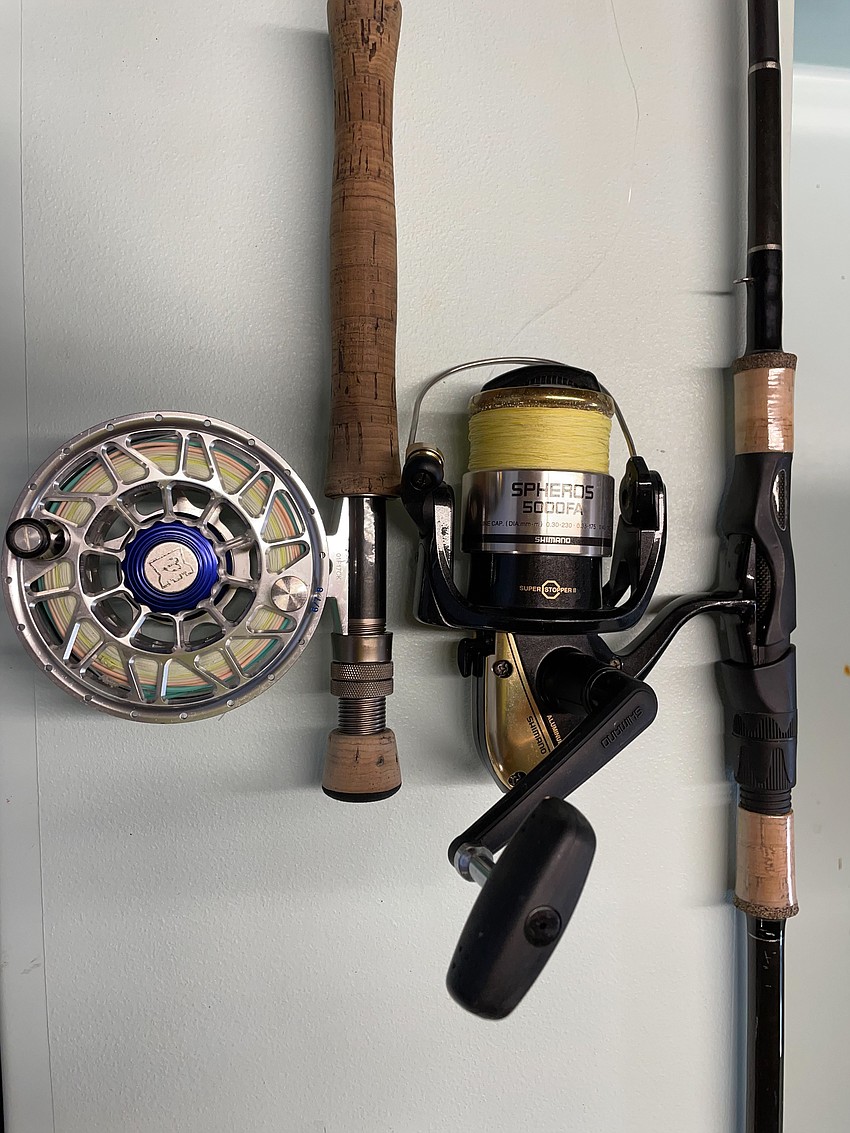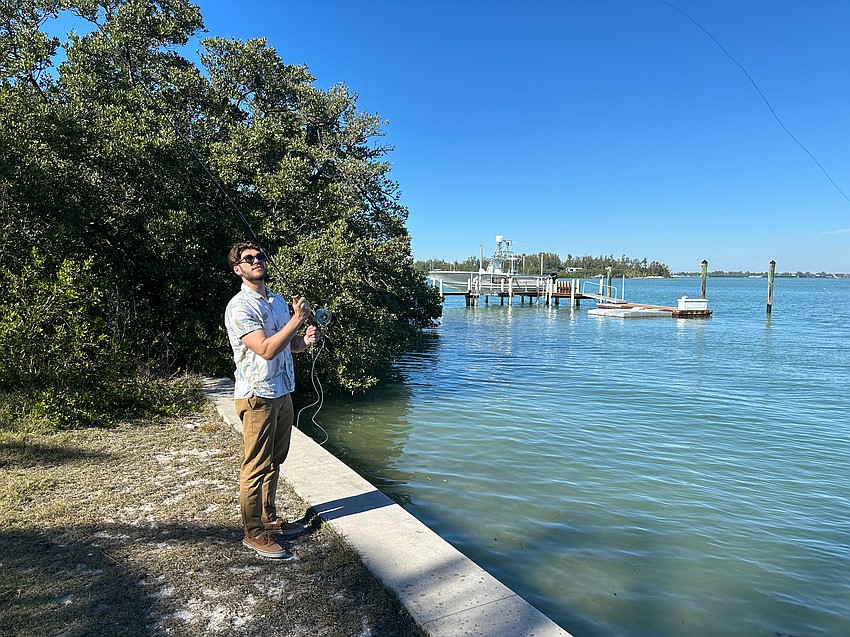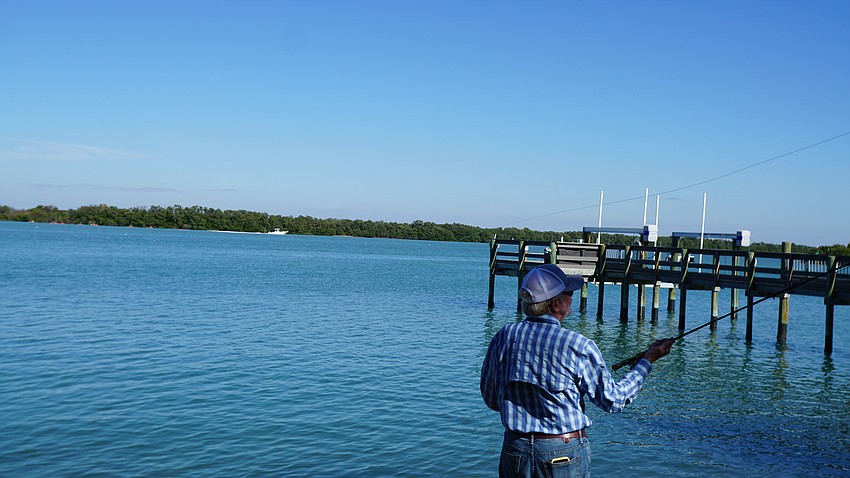- October 8, 2025
-
-
Loading

Fly fishing? I wasn’t sure people did that down here in the saltwater.
Having grown up fishing in the lakes of Pennsylvania and on the beaches of the Outer Banks, North Carolina, I was intrigued at the opportunity to learn a new method of fishing.
Longboat Key resident and longtime fisherman Rusty Chinnis teaches fly casting to anyone interested, and recently showed me the art of the cast.
I've never held a fly fishing rod before, which meant I also never tried to cast one. That was a big benefit, Chinnis said, since most people learn bad casting habits that are difficult to break.
First, a fly fishing rod looks different from a regular fishing rod. The circular spool is larger and more circular than conventional reels. It also runs parallel to the rod instead of perpendicular — if you were to let the reel roll, it would perfectly roll along the rod.

The reel sits near the end of the rod, whereas a conventional reel would be situated farther up, giving the user some more handling space between the reel and end of the rod.
So it took a minute to get used to the feel of the fly fishing rod.
Chinnis showed me the basics of starting the cast, which starts with unspooling line from the reel. About the last 8 feet of line is a more rigid material, but the rest is an elastic line.
After it sits in the reel for a while, loops form. Chinnis took an arm's length of line at a time and pulled it tight. He repeated the process until about 10-12 feet of the elastic line fell below his waist.
He showed me how to hold the extra line in your non-dominant hand.
Next, he showed me the basic motion of casting. Pull the rod back, look back, wait for the loop to form, then slowly move the rod forward, flick it like a dart — let a little line slip from the other hand. Repeat.
My turn.
For a minute or two, everything he had shown me escaped my mind.
But I gave it a shot. My belief is it's best to learn something by just diving right in.
Learning how to perfect the cast takes patience, and the right flick of the wrist.
It’s like throwing a dart, or using a paint brush to throw paint onto a canvas. Those also take some focus, but the analogy mainly refers to the motion of one’s wrist.

My first couple attempts were far from perfect. But Chinnis said I was getting the hang of it quickly — just the confidence boost I needed to keep going.
It’s not just once back and once forward like conventional casting. It’s an art.
It’s all about maintaining the momentum of the line. The cast starts with a quick flick back. I watched as the line followed the motion. The line then forms a loop in mid-air.
Quick, before the line touches the ground, begin the forward motion, then flick like a paint brush.
Chinnis coached me on improving my cast. I needed a more abrupt flick, less motion from my arm while at the same time not locking my elbow at my side, he said.
We went back and forth, him showing me the cast and me trying to build on my last attempt with what he showed me.
In less than an hour, Chinnis showed me the basic cast.
My casts weren’t spot on, but it’s all about repetition, he said. If you don’t practice it more, and frequently, he said you lose the motion.
Chinnis said I was ready to learn the next lesson, something most people don’t usually get to in the first private session.
We walked a couple feet to the seawall, where the breeze welcomed us and wasn’t too abrasive against the casting.
He showed me how to start a cast while the line was already in the water, to use in situations where you may want to re-cast.
Again, it’s about slow and controlled motion.

I followed his lead. First, I slowly pulled the rod back, and watched as the line crossed the tip of the rod. Then, I flicked the rod forward to start the momentum forward this time.
I pulled the rod back and watched the line loop behind me before returning the line forward with a quick motion.
After that, you’re supposed to let the line out of your non-dominant hand little by little. When there’s too much line in motion, that’s when you let the line go and cast it into the water.
I tried this several times, but it’s difficult to figure out when exactly there is too much line out. Chinnis said it’s something you feel in the cast, and something learned over time.
After a few more attempts, I felt satisfied with where I was after my first lesson.
On a Friday afternoon, being by the water and learning this craft was the perfect way to end a deadline driven, high-pressure week.
It was peaceful, and the need for patience allowed me to take a few minutes to slow down.
And I was eager to practice again, browsing used fly rods on Facebook Marketplace later that day.